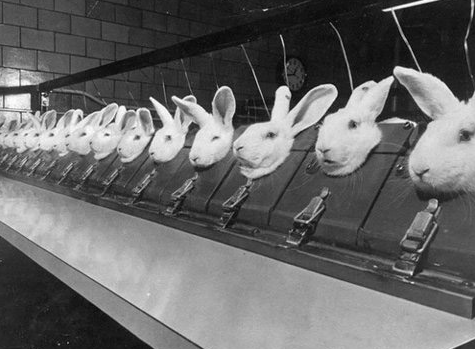Ana Rosa Rodriguez Maliha Shaheed Luis Salazar Alma Vazquez
English 21003 – P
Prof. Brian Brennan
December 2016
Are Fingerprint Patterns Inherited?
Introduction: Ana Rosa Rodriguez
The complexity of the human anatomy is quite evident in the distinctive qualities of fingerprints. Fingerprints consist of unique patterns of ridges. While there is not a sole agreement as to how fingerprints form, a widely accepted belief is that these ridges are formed during gestation. “It is observed in embryos of the 10th to 13th week that the basal layer of the epidermis becomes undulated. These undulations quickly become more prominent and form folds of the epidermis into the dermis. These folds are called primary ridges” (Kucken, et al. 72). It has been estimated that “the mathematical probability of two different individuals making exactly the same print is about one in two quadrillion” (O’Neill, 933).
A study conducted by Anil K. Jain claims that if two fingerprints were chosen at random from a large database, the probability of the two particular fingerprints having the same types of ridges is equal to 0.2718. That is to say “there is only 0.2718 chance that two randomly chosen index fingers will have the same type.” Given these unique qualities pertaining to human fingertip patterns, the inference that fingertip patterns are not subjective to genetic origins is compelling.
The burden of this experiment is to investigate the inheritance of fingerprint patterns. In order to effectively determine if classes of fingerprint patterns are genetically correlated, we will explore the links derived from the fingerprint patterns of twenty sets of siblings. These correlations will indicate whether or not there is a substantial link between fingerprint patterns and heritable influences. We expect to discover no noteworthy connection between the acquired fingerprint patterns of siblings. Essentially, the consistency in sibling fingertip patterns should not be significantly different than that of the fingertip patterns of a set of unrelated individuals.
Materials and Methods: Maliha Shaheed
- Paper towel
- Moist towelettes for cleaning hands
- Pencil
- Clear Tape
- White paper
- 20 Sibling pairs
- Journal
- First we started to practice taking clear fingerprints and asked others for trials.
- To make an ink pad variation, we rubbed a pencil on a piece of printer paper until it turned to complete grey.
- Then, we cleaned the right index finger using the moist towelettes for each person.
- We then thoroughly dried the finger with a paper towel for clean finger prints.
- Then fingers were pressed and slided over the grey area
- We rolled the fingers on the sticky side of the clear tape.
- Then using sciossors , we did cut that part of the tape and did stick to a white paper
- Another towlette was used to clean that finger
- We did try to perfect our technique until we very clear fingerprints came out.
- At the end, we made consent forms for everyone who did participate giving their fingerprints in this experiment.
- All 20 pairs of fingerprints were labelled from 1 to 20 and siblings were labelled as A and B.
- As a group, all of our did participate examining each fingerprints and did characterize as a whorl, arch, or loop pattern. We made a data table as well for better recordings.
Results: Luis Salazar
Pt1)out of 20 pairs of siblings (consisting of 40 individuals) 15 of the pairs were of the same fingerprint pattern.
We then crossed 20 pairs of strangers.Pt2) The unrelated individuals were matched together randomly and
the results were that they matched only 30% of the time.
Random finger prints were selected to identify whether or not were a match to each other. On this chart we can see that 70% were a match to each other, and 30% were not.
Discussion and Conclusion: Alma Vazquez
Our results demonstrate that the chance of a sibling pair matching fingerprint patterns is a higher rate than that of a set of unrelated individuals. These results indicate that our original hypothesis is not supported and fingerprint patterns are hereditary. In more in depth research, “dermatoglyphics studies have suggested that there is high class similarity in the fingerprints of identical twins” (Jain, et al. 4). This is an ideal example of how genetics play a role in the characteristics of fingerprint patterns. Once our experiment was completed, our results have inspired a more in depth experiment in showing how genetics affects the specific subcategories of fingerprint classes. For example, instead of categorizing a set of siblings with an arch fingerprint in the arch class, one might categorize the individuals in question in the subcategories. That is, plain arch or tented arch. This new research would include more sibling pairs and study each fingerprint thoroughly. This experiment has helped us gain more knowledge about the heavy influence genetics has on unique fingerprints.
Works Cited
O’Neill, M. Edwin. “Fingerprints in Criminal Investigation.” Journal of Criminal Law and Criminology (1931-1951), vol. 30, no. 6, 1940, pp. 929–940. www.jstor.org/stable/1137319.
Jain, Anil K., Prabhakar and Sharath Pankanti., “Twin Test: On Discriminability of Fingerprints.” Visgraph. http://visgraph.cs.ust.hk/biometrics/Papers/FingerPrints/icavpa-02.pdf
Kucken, Michael, Newell, Alan C., “Fingerprint Formation.”Journal of Theoretical Biology. 235 (2005) 71-83 http://math.arizona.edu/~anewell/publications/Fingerprint_Formation.pdf




